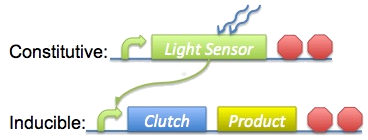Team:Imperial College/Summary
From 2008.igem.org
m |
m |
||
| Line 27: | Line 27: | ||
We feel accurate modelling of the genetic circuit contributes greatly to the characterisation of synthetic systems. As part of the project, the behaviours of constitutive and inducible promoters were modelled for comparison with our experimental data. | We feel accurate modelling of the genetic circuit contributes greatly to the characterisation of synthetic systems. As part of the project, the behaviours of constitutive and inducible promoters were modelled for comparison with our experimental data. | ||
====== Motility Analysis ====== | ====== Motility Analysis ====== | ||
| - | A major component of the system is the motility and shift between a motile and arrested state with the expression of EpsE. | + | A major component of the system is the motility and shift between a motile and arrested state with the expression of EpsE. Using microscopic analysis of ''B. subtilis'' cells, the velocity of wild-type cells was determined. Additional analysis of our EpsE expressing mutants will help characterise the efficiency and effectiveness of the clutch mechanism. |
|}} | |}} | ||
Revision as of 21:06, 20 October 2008
Summer Summary
|
|||||||||||||||||||||||||||
 "
"



